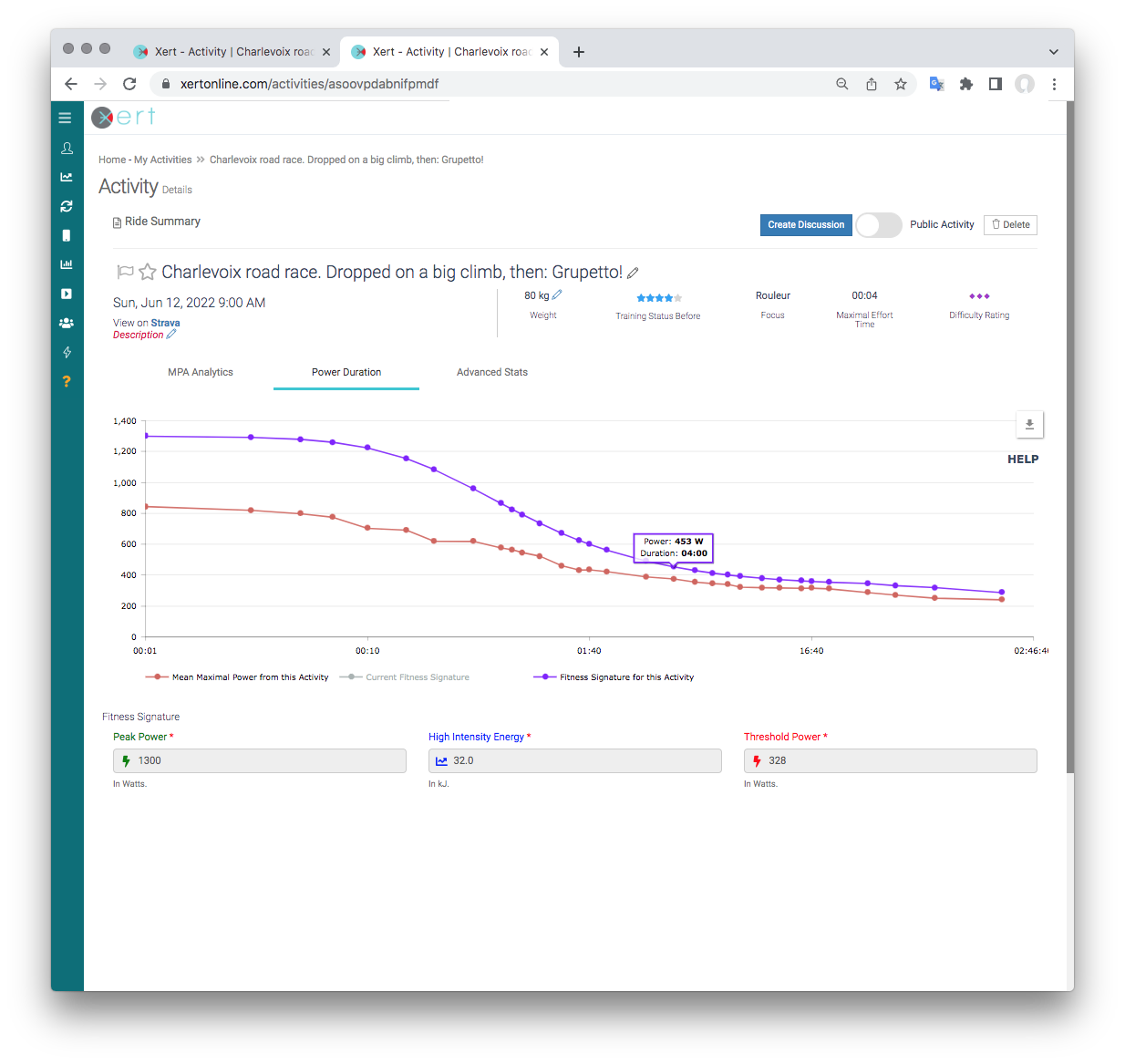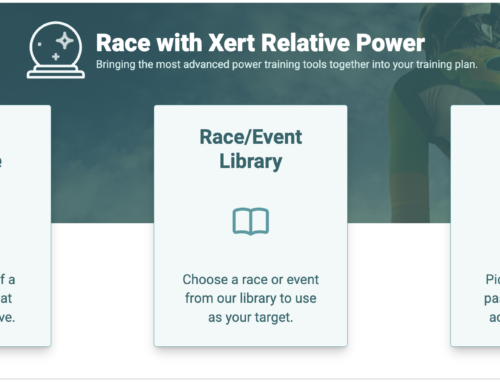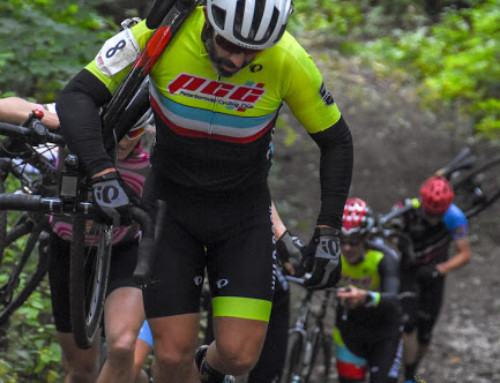Using Xert to Assess and Understand Your Training Demands
“How fit do I need to be?”
That’s easy: “As much as possible!”
While that seems like the obvious answer, the more likely answer will be “It depends.” How fit you need to be depends on a number of things about you and what you are trying to accomplish:
- Is there an event I’m targeting or am I just trying to get fit?
- If there’s an event, am I trying to win, do the best I can, support a team mate or just be able to keep up?
- If I’m just trying to get fit, how fit? By when?
- How fit am I now?
- How fit do I need/want to be?
- Will I need to make commitments and sacrifices and if so, am I ready to make them?
- How much time do I have to train?
- How much time do I *need* to train?
- Do I need to lose weight?
- How will I keep the training demands in balance with my life?
- How will I handle unforeseen changes in my goals or priorities?
Answering these questions, and perhaps many others that affect you specifically need to be considered. Your answers will help guide you towards what you need to do.
Reviewing Your Goals
Xert can be a great tool to help you prepare, whether it’s for a race, a major event or just to set a goal to be your best during a club event. Xert will help you Discover what the real demands of the event or race are, whether you’re trying to win or just be your best. You can use Xert to help you set appropriate and achievable goals and will guide you to Improve towards these goals within the commitments and sacrifices you are prepared to make. During the training process and even in competitions, Xert will give you feedback in real-time about your ability to Perform, helping you evaluate whether you’re on track or need to make changes to your training program. Xert acts as the window into your own progress and achievements you make towards your goals.
This post will help you understand how to use Xert to map out your training, understand what you can achieve and what you’ll need to do to prepare.
Xert’s 5 Step Review Process:
- Is there an event I’m targeting or am I just trying to get fit?
- If there’s an event, am I trying to win, do the best I can, support a team mate or just be able to keep up?
- If I’m just trying to get fit, how fit? By when?
- How fit am I now?
- What fitness do I need/want to reach?
- What commitments and sacrifices do I need to make?
- What could happen and what can I do to prepare in advance?
Answering these five questions helps answer the most important question:
What’s the training program I’m going to follow?
Your Training Program isn’t a set of workouts you’re going to do set out on a schedule. Plans are rarely followed perfectly and don’t account for unforeseen challenges. A Training Program is a set of principles you are going to follow such that:
- You improve at the rate you need to in order to reach your training goal.
- The improvement aligns with the target you want to achieve.
- The commitment you need to make is something that has enough flexibility for you to maintain it throughout the program.
- Unforeseen challenges don’t ruin your opportunity to reach your goals or demotivate you from staying on the training program.
- You can adapt and adjust the program, whether life opens up more opportunities to improve, you need additional recovery time or there are circumstances that impede your ability to maintain your commitments.
Examining your Target Event / Personal Goals
Whether you’re looking to prepare to win a National Championship or just want to ride in the A division of your local club, you’ll need to identify what that means in terms of fitness and goals. Xert is unique in that it provides you with specific ways you can assess what fitness level you need to achieve to reach your goals. Let’s learn more about this.
Whilst in the past, we often talked about assessing the target Focus for an event using the focus of an example activity, with the new features announced recently, you can go one level deeper. Let’s take a look at an example athlete and a race they are looking to perform better in. Last race, the athlete could not stay with the lead group. They simply did not have the fitness to keep up. To assess what the athlete needs to achieve, we can look deeper into their ride and assess things further. You can do that same with one of your rides/race files that you wish to use as your target, whether it’s for a race or just for a personal goal:
Looking at this race file, we can see that the opening 60 minutes of the race was really tough for this athlete. The Maximal Power Available (magenta line) started to really be affected at about the 30 minute mark. For this race, that early move is what separated the lead group with the main pack. By about 45:00, the athlete was at the limit (when MPA and power touch) and struggled to maintain a position with the lead group and was eventually dropped. The remainder of the race, was a gruppetto effort, i.e. without much intensity.
Looking at the Focus for the race, it was Rouleur (6 minute power) however that may not actually be what’s needed since the decisive parts of the race did not have several hours of easier riding. Using the new analysis metrics available when reviewing an activity, let’s click-and-drag the section of the race where all the action was:
What’s most important to note is that this section of the race where the decisive move was made has Focus of Puncheur – 4 minute watts/kg. This section had some sharp rollers where the puncheurs in the race would put the hammer down making difficult for others to stay with them.
What If?
To get a perspective of what fitness you may need to compete in the race, you can use the ability to test out different fitness signatures and use the Refresh button to see how they would apply to the race data. Adjusting the signature to PP=1300W, HIE=32kJ, and TP=328W and clicking the Refresh button, we get the following chart:
You can see that with a higher fitness signature, the athlete has a lot more power available (MPA is higher) to withstand the attacks made in the lead group. Indeed, he/she may have enough power available to contribute to the attacks rather than just trying to survive.
The fitness signature we chose was somewhat arbitrary but that’s ok. What we really want to know is “What’s the demand on Puncheur power, i.e. 4 minute power?”. The signature expresses this power and that’s what’s most important. Reviewing the chart under the Power Duration tab using the original signature (PP=1225, HIE=29.2, TP=318) we can inspect the curve to see that 4 minute power was 432W:
After we adjust the signature to the new values:
We see that the athlete needs to increase their 4 minute power to 453W in order to raise MPA sufficently to contend in this race. If the athlete weighs 80kg at the time, the will need to reach 453/80 or 5.66 W/kg. After performing this analysis, the athlete decides that a fitness signature that yields a 4 minute W/kg between 5.6 and 5.7 is where they need to be to contend in this race.
Setting up the Training Program
With a target fitness of 5.6-5.7 W/kg as a Puncheur (4 minute W/kg), we can now start to look at setting up the program. The Target Event Date for this race is August 8th. Given that we’re now near the end of June, this doesn’t leave a whole lot of time to prepare. But let’s see what Xert says. Using the Goals and Settings dialog on the My Fitness page, we can set the Athlete Type to Puncheur and the Target Event Date to August 8th, leaving the current Improvement Rate as Slow:
The Adaptive Training Advisor determines that to hit the Slow Improvement Rate this week, requires 12.5 hours of training and by the Target Event Date, will be 13.2 hours. However, this won’t enable them to reach the goal of between 5.6 and 5.7 W/kg. Increasing the Improvement to Moderate-2, we can see that they can reach the lower 5.6 W/kg limit (assuming they maintain their weight):
They will need to train 14.7 hours this week and 17.5 hours at the end of the program in August. However, they acknowledge that some work obiligations in July could affect the amount of time they can commit for a brief period. They feel they should add in some more training as contingency for this. Adjusting the Improvement Rate to Aggressive-1:
They can reach their upper end fitness goal of 5.7 W/kg by race day if all goes well with their training. The time commitment of 15.8 hours this week increasing to 19.8 hours the last week is something they are prepared to commit to. Looking at the Training Progam slider:
They are already in the Build phase of the program starting with a Focus of Rouleur. After the first week in July, they’ll be totally focussed on improving their 4 minute power as much as possible, leading up to the Taper Week before the race:
The program is clear in the demands that are needed and the path to 5.7 W/kg is something that athlete believes they can achieve. With that confidence, the athlete can feel assured that if they commit to following the program and follow the advice of the Adaptive Training Advisor, they can reach their training and fitness goals and be prepared to race the event. Even if they see interruptions due to work or otherwise, they’ve left enough in their program as a buffer to ensure they will be ready come race day.















